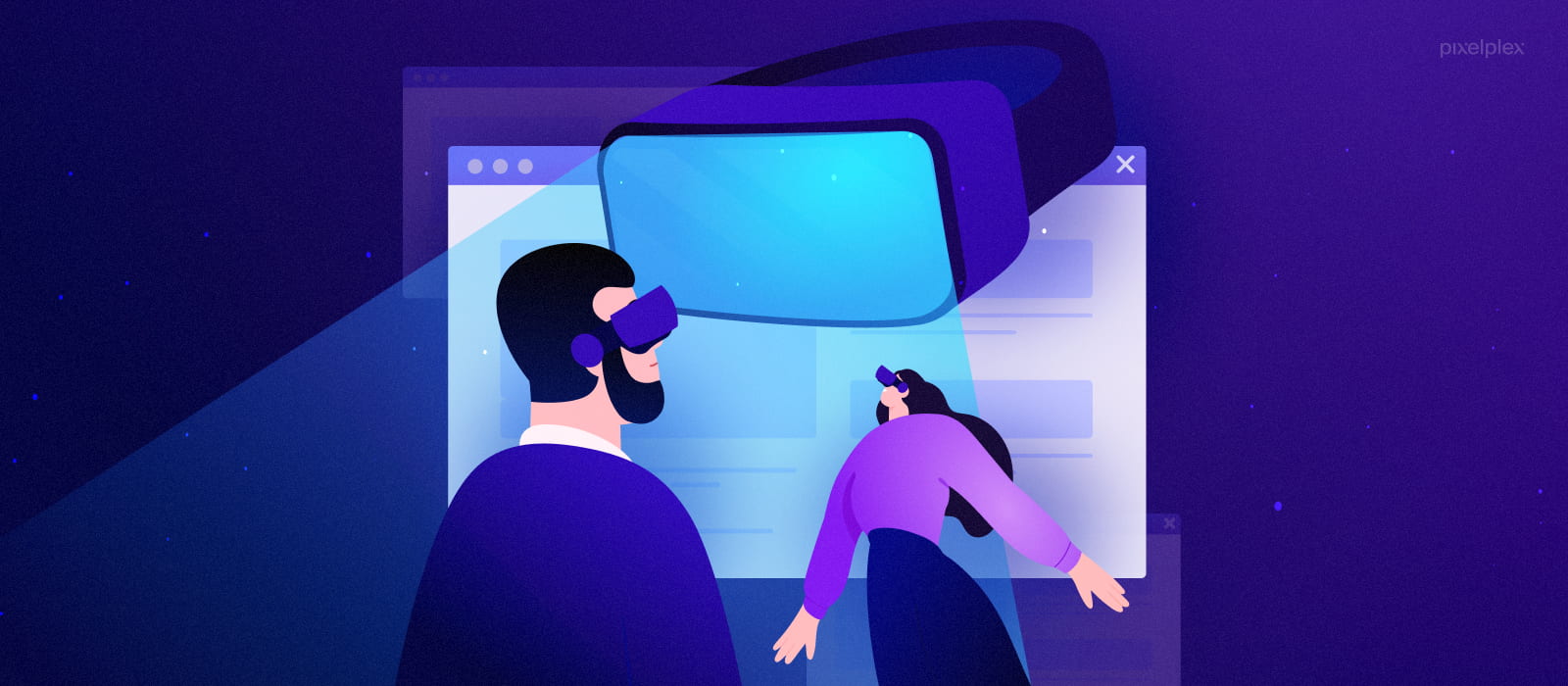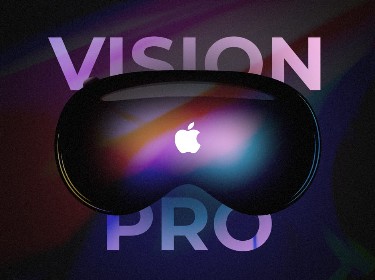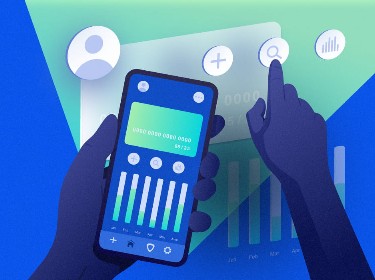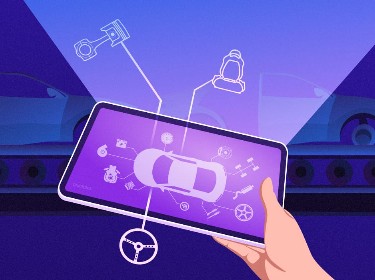Virtual reality employee training can be used across a variety of industries, allowing workers to safely and effectively acquire all sorts of operational skills and learn crucial safety and maintenance techniques.
The growing adoption of virtual reality is unsurprising given its versatility and wide-ranging applicability across various domains and workflows.
So far, one of the most sophisticated and eye-catching use cases for the technology is virtual reality training, whose global market size is expected to reach $142.1 billion by 2030.
In this article, we will delve into virtual reality employee training and its benefits, see which industries can adopt the technology in their operations, and take a closer look at some real-life examples of how various organizations leverage virtual reality training.
What is virtual reality training and when to use it?
![]()
Virtual reality (VR) training is the immersive digital simulation of real-life workplace situations, settings, and scenarios. It allows employees to practice and gain professional skills in a 360°, active, and risk-free environment, and interact with simulated real-world equipment, machinery, other trainees, and instructors with the help of specialized VR headsets and controllers.
Virtual reality employee training is of particular value in contexts and situations such as:
- Training for positions that require operating hazardous machinery (e.g. construction and manufacturing)
- Training which is costly and time-consuming (e.g. aviation)
- Training within currently non-existent locations and enterprises
- Training where errors cannot be tolerated (e.g. healthcare)
See how our experts delivered this VR platform for hotel & resort owners and tour agents to showcase locations in 360° virtual tours
Benefits of virtual reality training
![]()
Virtual reality employee training offers a host of advantages, the most outstanding of which are the opportunity to gain hands-on experience, a safer and more personalized learning environment, the ability to acquire professional skills remotely, greater engagement, and better acquisition of new skills.
Opportunity to gain hands-on experience
Some roles and positions require employees to obtain real-life experience before getting started with their actual duties. Otherwise, unskilled workers may break costly equipment or, even worse, do harm to themselves.
Luckily, virtual reality training complies with the requirements and needs of today’s workers and allows for flexible and autonomous learning with little set-up time and practice space. Sophisticated VR controllers and headsets help employees effectively pick up professional skills, enabling them to fully immerse themselves in settings and go through real-life scenarios.
Safer and more personalized learning environment
One of the best things about virtual reality training is that it allows employees to safely develop skills that imply a certain degree of danger with no fear of making mistakes during training sessions.
Trainees can practice different skills in hazardous and complex situations, learn how to operate machinery and tools, and err without negative consequences or judgment from others. This results in better preparedness for future responsibilities, higher overall productivity, and increased self-confidence.
Crucially, virtual reality employee training can be customized and fine-tuned in accordance with the capabilities and preferences of each and every trainee. VR solutions can also provide personalized feedback on trainee performance and offer valuable recommendations.
Ability to acquire professional skills remotely
An outstanding advantage of virtual reality is that it allows for remote training. This means that employers will not have to gather whole teams in a single location and think through all the financial and logistical aspects. Instead, VR will empower staff across the globe to undergo the exact same training session, learn at their own pace, and obtain all the necessary skills.
Greater engagement and better acquisition of new skills
Virtual reality makes training more engaging and fun, helping workers to stay focused on the learning process.
According to a PwC study into the effectiveness of VR for soft skills training, V-learners complete their training four times faster than those doing classroom training. The research also indicates that V-learners were four times more focused during training than their e-learning peers and 1.5 times more focused than their classroom colleagues.
Take a look at this VR real estate platform for generating 360° virtual tours
Examples of how different industries can use virtual reality in employee training
Virtual reality training has made inroads into multiple business domains and prompted stakeholders to revise or even completely upend their employee training methodologies in favor of a more advanced and efficient approach.
So far, virtual reality employee training has been embraced by industries such as healthcare, automotive, aviation, retail, manufacturing, construction, law enforcement & security, and offshore.
Let’s delve into each sector and see how it leverages the capabilities of virtual reality training.
![]()
Virtual reality training in healthcare
Virtual reality training is increasingly being applied in various areas within the healthcare sector. It offers a realistic environment for healthcare professionals, such as doctors and paramedics, especially in high-pressure settings like accident and emergency departments. This technology is crucial for training in life-saving skills, as evidenced by a 2023 Virti survey showing that 77% of healthcare organizations have adopted VR in their training programs.
In a similar vein, GigXR, a developer of holographic healthcare training, collaborated with Morlen Health to deliver holographic basic life support training. This technology simulates scenarios like CPR or defibrillator use and provides essential training for medical students, public safety professionals, and community members.
VR also enables healthcare professionals to train in simulated operating theaters, enhancing their readiness for real surgeries. For instance, Osso VR provides a virtual reality surgical training platform that allows surgeons to practice with medical devices in VR environments.
What’s more, FundamentalVR offers an immersive simulation platform for the medical field, designed to improve surgical skills through virtual and mixed reality. They recently partnered with the American Academy of Ophthalmology to enhance ophthalmic training globally, demonstrating VR’s expanding role in diverse medical training contexts.
Take a look at our full-cycle healthcare software development services and see how the PixelPlex team can help bring your vision to life
Virtual reality training in automotive
The global automotive VR market is projected to hit $14 billion by 2027, with a notable interest in VR training within the industry. This technology is being widely utilized in car manufacturing for various aspects, including safety, assembly, and logistics training.
Volkswagen Commercial Vehicles, for instance, has been exploring VR to improve the efficiency of its pre-training programs. Trainees use SenseGlove Nova haptic force feedback gloves to interact with virtual vehicle parts in a realistic manner, thus enhancing training while reducing the need for physical presence at the site and preserving pre-series vehicles for showroom display.
Besides, Transfr’s VR technology is revolutionizing training in the automotive sector by offering virtual simulations for vehicle inspection and repair. This approach provides a safe, immersive environment for learners to develop essential skills without the associated safety risks, further illustrating VR’s transformative impact in automotive training.
Virtual reality training in aviation
The global pilot training market is predicted to hit $20.02 billion by 2029, with virtual reality likely to elevate the adoption of these training systems.
KLM Royal Dutch Airlines, for instance, embraced virtual reality training for the ground crew responsible for operating jetway bridges connecting the departure gate to the plane for passenger boarding. Lufthansa launched Airbus virtual-reality cockpit training for A320s. Meanwhile, Alaska Airlines became one of the first-ever US airlines to use VR technology to help train pilots on their Boeing 737s, thus combating the countrywide pilot shortage.
Dubai-based airline Emirates is also catching up with the latest virtual reality employee training trends. The carrier is said to be planning to train thousands of new cabin crew in a virtual reality environment. However, trainees will still have to attend the airline’s aviation training college in order to complete practical hands-on sessions like aircraft evacuation, ditching, and medical emergency scenarios.
Virtual reality training in retail
Virtual reality training is revolutionizing learning and development in the retail sector by offering immersive scenarios that realistically portray common retail challenges. This innovative approach is reshaping how retailers train, assess, and enhance their employees’ skills.
For instance, virtual reality is used to create simulations of customer interactions, allowing employees to receive feedback on their performance. This helps staff develop the necessary skills for effective customer engagement and service.
The ReadySet VR solution exemplifies this new VR training method by using virtual reality to simulate real-world retail environments. This allows employees to practice decision-making in a virtual store and ensures they are well-prepared for actual in-store situations by rehearsing actions virtually.
Plus, VR training enables staff to familiarize themselves with complex retail settings, such as warehouses and stores, without physically being there. This approach helps employees understand how to navigate different layouts, products, and store shelves more effectively.
A significant example of VR application in retail is Walmart’s use of the technology since 2017 in its Walmart Academies. By employing virtual reality to create lifelike training scenarios, such as Black Friday rushes, Walmart has seen a marked improvement in employee test scores, by 10% to 15%, when compared to traditional training methods.
Check out how our retail solutions developers provide tech that supports the full business cycle
Virtual reality training in manufacturing
Manufacturers worldwide are adopting virtual reality training to improve their employees’ situational awareness and knowledge of core safety protocols. This innovative approach significantly reduces training time and safety incidents.
In line with this trend, Seneca Polytechnic and Siemens have expanded their partnership, equipping Seneca students with a virtual reality manufacturing simulation kit and industry-leading software. This effort is designed to enhance training in applied science and engineering technology, offering students immersive, hands-on experience with industry-standard tools and preparing them for careers in various sectors.
Similarly, New Holland Agriculture, a leading agricultural machinery manufacturer, has established its own knowledge center with a virtual reality space. This facility aims to train both new and experienced operators, providing a comprehensive and safe learning environment.
Virtual reality training in construction
Employees engaged in the construction sector work in extremely hazardous conditions (e.g. working at height) and they need to be highly proficient to avoid any risks. Virtual reality training can teach workers to obtain essential skills in an immersive but totally safe environment. Employees can, therefore, make risk-free mistakes and hone their skills through safe practice.
Victoria University researchers teamed up to create a construction simulator with virtual reality, called COSI, as well as a cloud-based platform for building inspections. The two innovations are set to modernize the Australian construction industry and contribute to better safety for employees.
Trainees utilize specialized goggles and other equipment to enter a detailed simulation of a construction site in order to learn more about safety rules and techniques. Meanwhile, the cloud-based platform will enable photographs and 360° scans of a building or site to be uploaded and accessed remotely in real time.
Another interesting case worth highlighting is from Malaysia. Back in March 2021, the East Coast Rail Link (ECRL) project launched its inaugural safety campaign. Its primary objective was to make substantial improvements to its safety management system, which included the training of around 1,000 employees via simulation and reactive safety exercises in centralized safety training centers located in Kemaman, Maran, and Bentong.
The training centers were equipped with cutting-edge virtual reality simulation, with nearly 100 potential hazardous on-site situations, and offered real-life experiences, such as tunnel evacuation, electric shocks, safety helmet crashes, and collapse of retaining walls.
In March 2023, Malaysia Rail Link Sdn Bhd, the project owner, reported that the project had reached the significant milestone of 10 million safe man-hours without any lost-time injuries, emphasizing workforce safety during the 665 km rail alignment construction.
Find out more about how AR/VR technology can benefit the construction industry
Virtual reality training in law enforcement & security
Virtual reality training has been on the rise in police departments in different corners of the globe, as it helps officers learn how to operate under pressure and act in life-threatening circumstances.
Law enforcement officers from the Montgomery County Sheriff’s Office have been using the Axon virtual reality simulator to practice de-escalation training techniques, crisis intervention skills, and mental health encounters.
The New London Police, for their part, have adopted the Apex Officer trainer, a solution that provides officers with the ability to fully control diverse simulated scenarios, such as a motor vehicle accident or disputes in apartments or alleyways. This technology allows for real-time training in situations that officers might encounter while on duty.
Another VR training solution worth highlighting is from VirTra, a global provider of judgmental use of force training simulators. It provides training for police personnel in simulated scenarios filled with visual, auditory, and physical stimuli (e.g. the solution can simulate barking dogs, street noise, and other disturbing factors).
In addition to these, CHC Helicopter, a provider of search and rescue helicopter services, adopted next-gen VR simulations to train its technical crew members in emergency procedures for high-risk search and rescue events in a safe, controlled, and realistic environment. This ground-breaking method was even accepted and acclaimed by the European Aviation Safety Agency (EASA) and the Irish Aviation Authority (IAA).
Check out our detailed guide to the Apple’s Vision Pro headset, its technical characteristics and core use cases
Virtual reality training in offshore
The offshore sector, which is known for its challenging and high-risk nature, stands to benefit significantly from virtual reality training.
Vinci, a VR tech training startup, has developed VR simulations for ports and wind turbines. These simulations are intended to replace the hands-on training elements of key global wind organization courses, such as Basic Technical Training and Slinger Signaller. Their software allows trainees to manage a wind turbine and direct crane lifts of heavy items, like turbine blades, in a realistic manner.
In a similar effort, VRAI, an Irish VR startup, is bringing VR simulation training into the offshore wind sector. They aim to expand the offshore workforce and address the global energy crisis by using VR technology’s capabilities in training.
Closing thoughts
Virtual reality training has established itself as a powerful game-changer across domains. It allows employees to safely and effectively acquire professional skills in an engaging and safe environment while empowering businesses to boost overall productivity and reduce training time and costs.
Should you wish to develop your own virtual reality solution, reach out to our seasoned AR/VR development team for help. Whatever your business goals, timeframes, and resources, we will figure out how to balance them all so that you can translate your initiative into a transformation for your business.
Disclaimer: The information provided in this article is for educational purposes only. It does not constitute advice or recommendations for embracing or investing in virtual reality technology. Please seek professional advice before taking financial risks.




